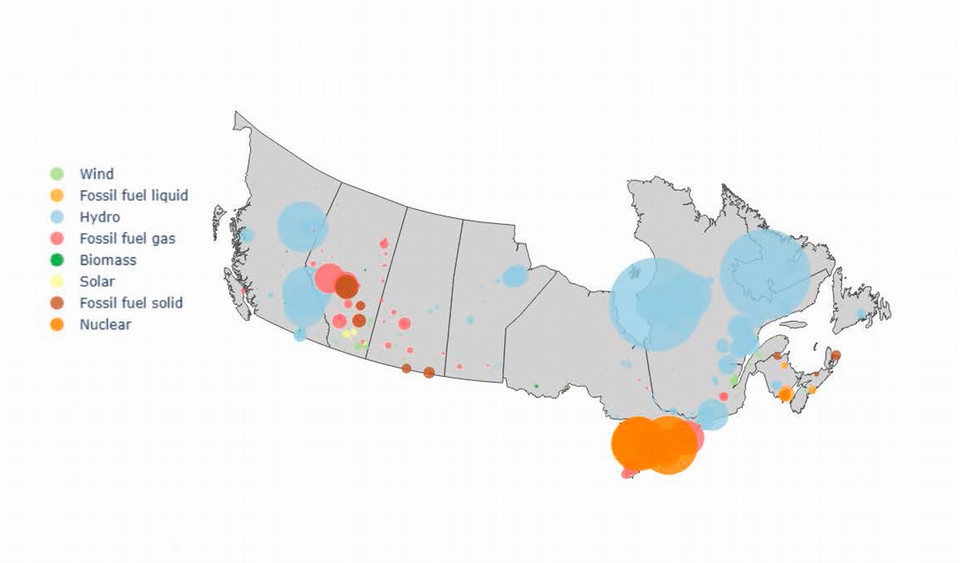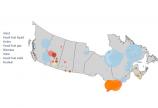New funding adds robust tools to test climate policy impacts

The University of Victoria is set to advance the Canadian climate policy modelling ecosystem with the launch of the Open Insights project today, supported by a gift of $2.5 million from Clean Prosperity Foundation.
Open Insights will produce a suite of tools to analyze the multiple pathways to achieving Canada’s commitment of net zero carbon emissions by 2050. These accessible and transparent tools will address the complexity of decarbonization in the Canadian context, allowing policymakers, infrastructure planners and think tanks to evaluate different decisions and their cascading impacts.
UVic has been developing a platform for these tools since 2019 called M3 (referencing a multi-scaled, multi-sector and multi-vector modelling approach). With this injection of funding from Clean Prosperity Foundation—which conducts, supports and disseminates environmental economic research—six new and enhanced models will be added to M3, along with improved data inputs and visualization tools.

This figure shows the relative capacity of each generator on the electrical grid in Canada’s provinces. This is just one of many visualizations that are possible in SESIT’s IDEA visualization platform. Credit: IDEA platform
UVic civil engineer Madeleine McPherson is leading this project to develop an integrated modelling framework that explores the sustainable energy transition specific to Canada.
We need to use multiple models to tell the decarbonization story; we can’t rely on sector-specific tools alone, which only tell a fraction of the story. The M3 platform was set up to integrate a broad suite of models, but we were missing key economic parameters. Clean Prosperity Foundation saw the strategic opportunity to inject critical funding to fill that gap.
—Madeleine McPherson, UVic civil engineer
“The visualization tools play a vital role in communicating the results from modelling in an effective way,” McPherson adds. “This is a very live conversation that is changing quickly; static reports can’t always keep up with the conversation or fully engage stakeholders. With the visualizations, we can have an inclusive dialogue about the results in real time.”
The first and only suite of open-source Canadian-specific energy models, data, and visualization tools is applicable for many different users and use-cases. It can be used to quickly evaluate proposed policy packages, and address specific questions, like the most cost-effective way for a province to reach a net zero electricity grid, inform infrastructure decisions, predict shifts between economic sectors, and study longer-term implications of new technologies.
UVic is at the forefront of energy policy modelling work in Canada. Through this gift, we will be able to bring leading researchers and computer scientists to UVic to further advance our capabilities and offerings, while training the next generation of experts in this field. We’re pleased to collaborate with the Clean Prosperity Foundation on common goals towards decarbonization in Canada and thank them for their generous support and partnership.
—Mina Hoorfar, dean of UVic’s Faculty of Engineering and Computer Science
The $2.5 million supports the hiring of post-doctoral research analysts, graduate students, and software developers, and public dissemination of the research via conferences, forums, courses and communications. Open Insights is a collaborative effort between the Sustainable Energy Systems Integration and Transitions Group at UVic, Energy Modelling Hub, Macrocosm Group and the Energy and Materials Research Group at Simon Fraser University.
Open Insights aims to engage a wide network of contributors in the development and refinement of the project’s open-source models. “This project is guided by a conviction we share with Clean Prosperity Foundation that modelling at the national and regional levels should be transparent, constantly improving, and open for all to use,” says McPherson.
Open Insights is supporting Canada’s race to meet its net zero goals, in line with UVic’s commitment to the UN Sustainable Development Goals of affordable and clean energy, climate action, and partnerships for the goals. Learn more about our impact and discover what makes climate action research unique at UVic.
Photos


In this story
Keywords: Clean Prosperity Foundation, climate, environment, sustainability, SDGs, clean energy, funding, philanthropy, research, technology, engineering, computers
People: Madeleine McPherson, Mina Hoorfar
